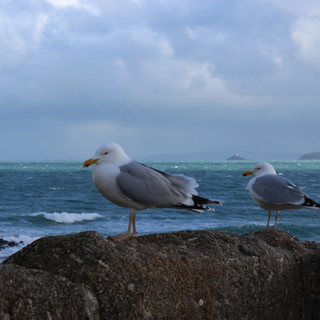Discover England: The South West Coast Path
- amy2111
- Feb 28, 2018
- 3 min read
The South West Coast Path is the longest National Trail in the UK, making up 630 miles of dramatic coastline on one side, and a diverse range of landscapes on the other. Craggy cliffs, steep valleys, lush fields, leafy woodland - the Path offers an always-changing and endlessly-interesting walking route through this region, showcasing its wild natural beauty at every turn.
You'll get to know the locals too, with plenty of opportunities for bird watching and seal spotting, as well as encounters with the region's smaller inhabitants, like the butterflies of the Chipman Valley.
The beauty of the Path is striking, but so is its richness in history. As you walk along the coast, you'll discover the remains of fortresses dating back to the Iron Age, former Roman settlements, and fortifications from the time of the Spanish Armada. As you walk through England's story, you'll also learn of some of the more colourful characters who have left their mark on this region; mermaids, giants, and, of course, King Arthur.
With your days spent walking, your evenings can be spent relaxing in any one of the quintessentially English fishing villages dotted along the coast. Weave through the delightfully narrow streets and sample the local cuisine, freshly fished that morning.
With six different themed walks - the Timeless Coast, the Wilderness Coast, the Wild West Coast, the Nautical Coast, the Seafood Coast, and the Coast of Legends - there really is a route to suit everyone. Dive in and take a look at some of the highlights of the South West Coast Path below, handpicked by the Abbey Ireland & UK team who recently enjoyed walking a part of the Path.
Tintagel
Home of Arthurian legend, Tintagel Castle is said to be the birthplace of Kind Arthur, and on its perch above the swirling Atlantic Ocean below, it certainly exudes a magical and mystical quality. Having been excavated in the 20th century, it was proposed that Tintagel had been a Celtic monastery and later a fortress with trading links due to the Mediterranean artifacts found during the excavation.
Paignton
A gorgeous seaside town in Devon, Paignton is part of what's locally known as the English Riviera. Originally a Celtic settlement, Paignton grew into a fishing village that later became a favourite holiday destination, and boasts a traditional English pleasure pier dating from 1879.
St. Ives
A favourite of artists, St. Ives in Cornwall is an idyllic seaside resort famed for its breathtaking beauty. It boasts four beaches whose golden sands and rolling waves draw both holidaymakers and surfers, while its authentic old town, known locally as 'Downlong' offers a warren of winding cobbled streets to explore.
Mevagissey
Part of the Cornwall Area of Outstanding Natural Beauty, Mevagissey is a small and charming town built around a harbour which once thrived on fishing and smuggling. Now, its main industry is tourism, as visitors flock to admire the spectacular coastline, explore the sandy coves, and experience local attractions like the Lost Gardens of Heligan.
Plymouth Town
Plymouth is famous for being the city from where the Mayflower set sail for the New World in 1620, but its story goes as far back as the Bronze Age. This maritime city is brimming with history - its oldest district, the Barbican, has 100 listed buildings and the most cobbled streets in all of Britain! And you can't leave without trying the local Plymouth Gin, brewed since the 1700's.
We've put together an itinerary taking you through North Cornwall and North Devon, take a look here!




























































































Comments